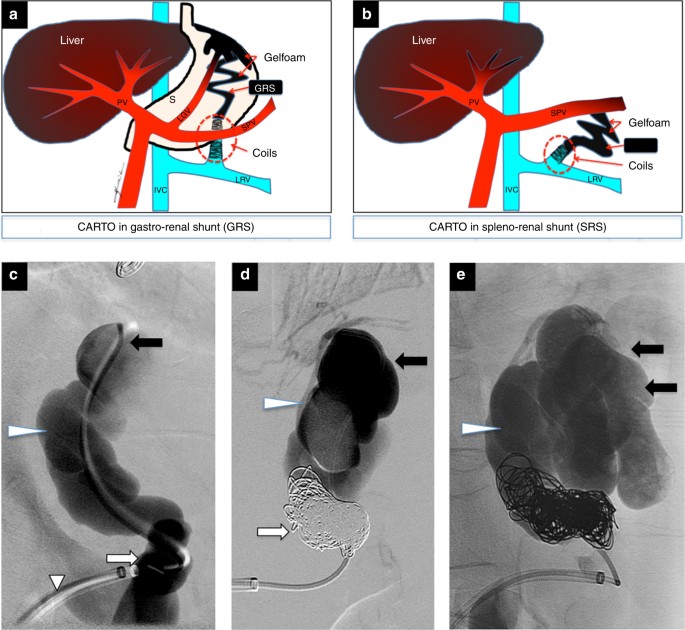

One patient passed away at 24 days after the CARTO due to systemic and portal venous thrombosis and multi-organ failure. Minor post-CARTO complications, including worsening of esophageal varices (not bleeding) and worsening of ascites/hydrothorax, were noted in 5 patients (25%). Thirteen out of the 20 had endoscopic confirmation of resolution of varices. Follow-up computed tomography after CARTO demonstrated decrease in size with complete thrombosis and disappearance of the varices in all 20 patients. Clinical success rate (defined as no variceal rebleeding) was 100%.

Technical success, clinical success, rebleeding, and complications were evaluated at follow-up.Ī 100% technical success rate (defined as achieving complete occlusion of efferent shunt with complete thrombosis/obliteration of bleeding varices and/or stopping variceal bleeding) was demonstrated in all 20 patients. All patients had detachable coils placed to occlude the efferent shunt and retrograde gelfoam embolization to achieve complete thrombosis/obliteration of varices. All 20 patients had at least 6-month follow-up. To describe the technical feasibility, safety, and clinical outcomes of coil-assisted retrograde transvenous obliteration (CARTO) in treating portal hypertensive non-esophageal variceal hemorrhage.įrom October 2012 to December 2013, 20 patients who received CARTO for the treatment of portal hypertensive non-esophageal variceal bleeding were retrospectively evaluated.


 0 kommentar(er)
0 kommentar(er)
